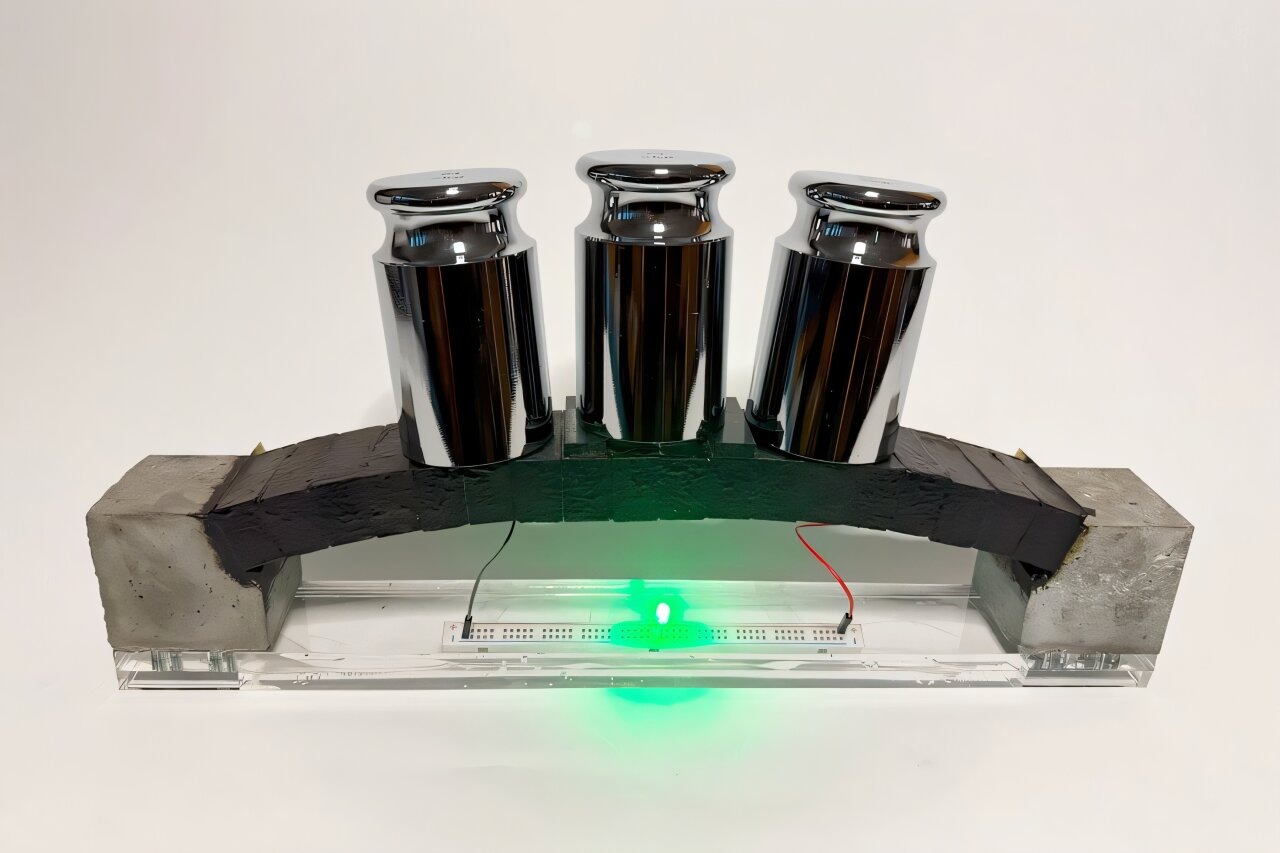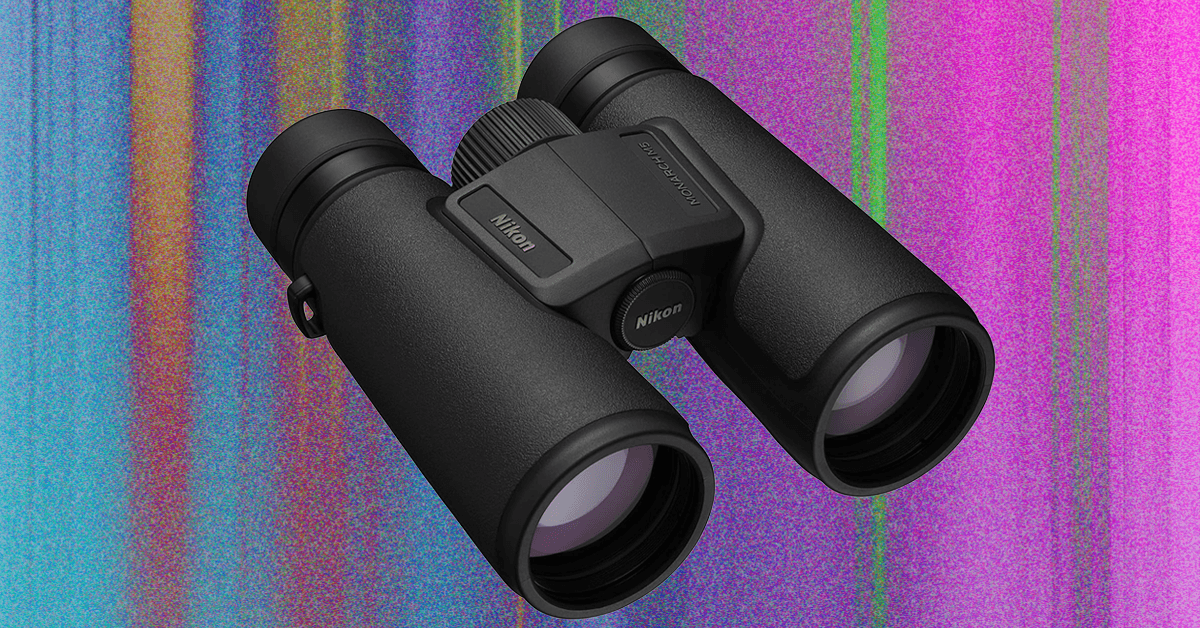Tech
Concrete ‘battery’ now packs 10 times the power

Concrete already builds our world, and now it’s one step closer to powering it, too. Made by combining cement, water, ultra-fine carbon black (with nanoscale particles), and electrolytes, electron-conducting carbon concrete (ec3, pronounced “e-c-cubed”) creates a conductive “nanonetwork” inside concrete that could enable everyday structures like walls, sidewalks, and bridges to store and release electrical energy. In other words, the concrete around us could one day double as giant “batteries.”
As MIT researchers report in a new PNAS paper, optimized electrolytes and manufacturing processes have increased the energy storage capacity of the latest ec3 supercapacitors by an order of magnitude.
In 2023, storing enough energy to meet the daily needs of the average home would have required about 45 cubic meters of ec3, roughly the amount of concrete used in a typical basement. Now, with the improved electrolyte, that same task can be achieved with about 5 cubic meters, the volume of a typical basement wall.
“A key to the sustainability of concrete is the development of ‘multifunctional concrete,’ which integrates functionalities like this energy storage, self-healing, and carbon sequestration. Concrete is already the world’s most-used construction material, so why not take advantage of that scale to create other benefits?” asks Admir Masic, lead author of the new study, MIT Electron-Conducting Carbon-Cement-Based Materials Hub (EC³ Hub) co-director, and associate professor of civil and environmental engineering (CEE) at MIT.
The improved energy density was made possible by a deeper understanding of how the nanocarbon black network inside ec3 functions and interacts with electrolytes.
Using focused ion beams for the sequential removal of thin layers of the ec3 material, followed by high-resolution imaging of each slice with a scanning electron microscope (a technique called FIB-SEM tomography), the team across the EC³ Hub and MIT Concrete Sustainability Hub was able to reconstruct the conductive nanonetwork at the highest resolution yet. This approach allowed the team to discover that the network is essentially a fractal-like “web” that surrounds ec3 pores, which is what allows the electrolyte to infiltrate and for current to flow through the system.
“Understanding how these materials ‘assemble’ themselves at the nanoscale is key to achieving these new functionalities,” adds Masic.
Equipped with their new understanding of the nanonetwork, the team experimented with different electrolytes and their concentrations to see how they impacted energy storage density.
As Damian Stefaniuk, first author and EC³ Hub research scientist, highlights, “we found that there is a wide range of electrolytes that could be viable candidates for ec3. This even includes seawater, which could make this a good material for use in coastal and marine applications, perhaps as support structures for offshore wind farms.”
At the same time, the team streamlined the way they added electrolytes to the mix. Rather than curing ec3 electrodes and then soaking them in electrolyte, they added the electrolyte directly into the mixing water. Since electrolyte penetration was no longer a limitation, the team could cast thicker electrodes that stored more energy.
The team achieved the greatest performance when they switched to organic electrolytes, especially those that combined quaternary ammonium salts—found in everyday products like disinfectants—with acetonitrile, a clear, conductive liquid often used in industry. A cubic meter of this version of ec3—about the size of a refrigerator—can store over 2 kilowatt-hours of energy. That’s about enough to power an actual refrigerator for a day.
While batteries maintain a higher energy density, ec3 can in principle be incorporated directly into a wide range of architectural elements—from slabs and walls to domes and vaults—and last as long as the structure itself.
“The Ancient Romans made great advances in concrete construction. Massive structures like the Pantheon stand to this day without reinforcement. If we keep up their spirit of combining material science with architectural vision, we could be at the brink of a new architectural revolution with multifunctional concretes like ec3,” proposes Masic.
Taking inspiration from Roman architecture, the team built a miniature ec3 arch to show how structural form and energy storage can work together. Operating at 9 volts, the arch supported its own weight and additional load while powering an LED light.
However, something unique happened when the load on the arch increased: the light flickered. This is likely due to the way stress impacts electrical contacts or the distribution of charges.
“There may be a kind of self-monitoring capacity here. If we think of an ec3 arch at an architectural scale, its output may fluctuate when it’s impacted by a stressor like high winds. We may be able to use this as a signal of when and to what extent a structure is stressed, or monitor its overall health in real time,” envisions Masic.
The latest developments in ec³ technology bring it a step closer to real-world scalability. It’s already been used to heat sidewalk slabs in Sapporo, Japan, due to its thermally conductive properties, representing a potential alternative to salting.
“With these higher energy densities and demonstrated value across a broader application space, we now have a powerful and flexible tool that can help us address a wide range of persistent energy challenges,” explains Stefaniuk.
“One of our biggest motivations was to help enable the renewable energy transition. Solar power, for example, has come a long way in terms of efficiency. However, it can only generate power when there’s enough sunlight. So, the question becomes: How do you meet your energy needs at night, or on cloudy days?”
Franz-Josef Ulm, EC³ Hub co-director and CEE professor, continues, “The answer is that you need a way to store and release energy. This has usually meant a battery, which often relies on scarce or harmful materials. We believe that ec3 is a viable substitute, letting our buildings and infrastructure meet our energy storage needs.”
The team is working toward applications like parking spaces and roads that could charge electric vehicles, as well as homes that can operate fully off the grid.
“What excites us most is that we’ve taken a material as ancient as concrete and shown that it can do something entirely new,” says James Weaver, a co-author on the paper who is an associate professor of design technology and materials science and engineering at Cornell University, as well as a former EC³ Hub researcher.
“By combining modern nanoscience with an ancient building block of civilization, we’re opening a door to infrastructure that doesn’t just support our lives, it powers them.”
More information:
Damian Stefaniuk et al, High energy density carbon–cement supercapacitors for architectural energy storage, Proceedings of the National Academy of Sciences (2025). DOI: 10.1073/pnas.2511912122
This story is republished courtesy of MIT News (web.mit.edu/newsoffice/), a popular site that covers news about MIT research, innovation and teaching.
Citation:
Concrete ‘battery’ now packs 10 times the power (2025, October 2)
retrieved 2 October 2025
from https://techxplore.com/news/2025-10-concrete-battery-power.html
This document is subject to copyright. Apart from any fair dealing for the purpose of private study or research, no
part may be reproduced without the written permission. The content is provided for information purposes only.
Tech
I Keep Cooking Thanksgiving! Here’s the Best Holiday Meal Delivery

Making a full Thanksgiving feast for guests can be daunting, for some perhaps even terrifying. The world, and especially Hallmark movies, is full of holiday disaster stories: burnt turkeys, failed desserts, steamed hams. But I’m not bragging when I say that the first Thanksgiving dinner I prepared for my extended family—a little early, this year—was an unmitigated success.
My aunt couldn’t stop talking about the black pepper in the biscuits and the sage on the carrots. My uncle went in for the turkey and the apple-sausage stuffing. My father didn’t speak at all, unless prompted. He just ate and ate. This was a compliment.
But of course, I had cheated. I had ordered my Thanksgiving in the mail—one of the new breed of Thanksgiving meal kits.
The meal was genuinely home-cooked, of course, prepared mostly from scratch. But the entire seven-platter feast—its ingredients and recipes—had arrived two days before, in a box large enough to house a primal cut of beef. It was Thanksgiving in a box: a $200 “Chef’s Table Thanksgiving” meal kit available from sister meal delivery plans Sunbasket and Gobble.
The spread from Sunbasket was vast and generous. The table contained a nearly 3-pound roast of turkey, mounds of mashed potato, pebbled cranberry compote, roasted carrots dressed in miso-sage butter, brussels sprouts dappled with pecorino romano and pancetta, an endless platter of fennel-apple-sausage-stuffing, Gruyère black-pepper biscuits caked more than an inch tall, a tureen of deep brown turkey gravy, a ginger apple crisp waiting in the wings.
Sunbasket is among a new bounty of meal kit companies that aim to ease the stress of the holidays by doing the planning and the shopping for you—big meal boxes tailor-made for those who still want to make a home-cooked meal but for whom the prospect of planning a vast and complicated feast is prohibitive. In fact, two weeks later I cooked another Thanksgiving meal from Blue Apron, this time for my sister’s family.
Here was my experience with Sunbasket and Blue Apron—and some of the other Thanksgiving meal delivery options to get your whole Thanksgiving meal delivered to your home.
Want meal kits for more everyday occasions? See WIRED’s guides to the best meal delivery services, and the best plant-based meal delivery kits.
The Blue Apron à la Carte Thanksgiving (and Holiday) Meal Kit
Available till December 29. Order by November 19 to ensure delivery by Thanksgiving.
Blue Apron, one of the OG meal kits in the US, has undergone a wholesale transformation this year. One of the biggest changes is that subscriptions are no longer required, and à la carte meal ordering is possible—indeed, it’s now my favorite no-subscription meal kit offering. What this means is that for this Thanksgiving, you can order individual Thanksgiving recipe kits to prep fresh at home, without ever setting foot in a crowded grocery store.
That means roasted grape and goat cheese salad ($12), a big ol’ turkey breast with gravy and cranberry sauce ($50), rosemary herb stuffing ($15), a truly excellent casserole worth of truffle-oiled Southern mac and cheese ($20), almond apple crumb pie ($15), brown butter mashed potatoes ($8), challah rolls with maple ($8) and roasted brussels sprouts with pistachios, ($10). I made all of these recipes for my sister’s family and our parents, a little early this year—and it was a surprisingly delicious feast fit for at least eight people. Probably even 10, if you add an extra order of mashed potatoes.
Tech
The Best Binoculars Will Help You Find the Ivory Billed Woodpecker

You get good magnification, with a waterproof (IPX7 rating) and fogproof design in a lightweight package (11.8 ounces). These also have two things that specifically make them great for kids: rugged construction and a nice, rubberized grip. I can’t tell you how many trees and rocks these have bashed into while around my son’s neck, and they’re still as good as new.
Stargazing Binoculars
When you think stargazing you probably think telescopes, but binoculars can work too, especially larger, higher-magnification models like these Celestron Skymasters. The first thing to know is that these are huge—most of the time you’ll want to use them with a tripod, which is not included in the price (they do include an adapter, which I used to put them on a photo tripod, which worked fine). The Porro prism design (see above), with 15x magnification and 70mm objective lenses, make these nice and bright, perfect for getting good views of the moon. They also work for larger clusters and nebulae. They do work for birding as well, but it’s more like using a spotting scope. They’re nice for digiscoping, though if you’re viewing something reasonably stationary, like water birds.
As with all Celestron binos there’s a nice big, smooth focusing knob, and they also have long eye relief which makes them easy to use with glasses. There is a fair bit of chromatic aberration, especially with bright stars or the moon, but I didn’t find it distracting. In fact, for the price, these provide surprisingly great views.
Image-Stabilizing Binoculars
Image-stabilized binoculars use electronics to smooth out your view, similar to what action cams do to get rid of jittery video. There are quite a few models out there, and we are still testing, but here are a few that have stood out from the pack so far.
Image-stabilized binoculars tend to be expensive, but Canon has quite a few budget models worth considering. They’re simple to use. You just tap the button on top for five minutes of stabilization, or tap again to turn it off sooner. The tech detects your movement and adjusts for it optically, in real-time. The Canon 8×20 IS, its smallest, is doubly pocket-friendly: They’re surprisingly affordable and fit in a large pocket. At 15-ounce plus battery, they won’t weigh you down.
The 8X magnification is good for wildlife and sports, as is the 10X magnification of the only slightly larger Canon 10×20 IS. The 6.6-degree field of view is narrow but wide enough for most situations.
Tech
Ransomware resilience may be improving in the health sector | Computer Weekly

In a possibly encouraging sign that cyber messaging is cutting through among healthcare providers, the sector appears to be becoming increasingly resilient to ransomware and cyber extortion, with fewer victims experiencing data encryption, fewer paying up and average time to recovery dropping according to a new Sophos report.
Based on global data collected by Vanson Bourne for a wider study, Sophos found that that this year, just 36% of victims in the healthcare industry paid a ransom, down from 61% in 2022, and over half of those that paid handed over less than what was demanded of them.
Demands from ransomware gangs also plummeted during the observed period, down 91% to $343,000 (£260,800) on average this year, with average payments dropping from $1.47m to just $150,000, the lowest of any sector reported in the wider dataset.
The mean cost of recovery – excluding any ransoms – was also down by 60% to $1.02m. And 58% of healthcare respondents said they recovered within a week, a strong improvement from 21% last year.
“It’s … encouraging to see signs of stronger resilience. In the study, nearly 60% of providers reported they recovered within one week, up from just 21% last year, which reflects real progress in preparedness and recovery planning. In a sector where downtime directly affects patient care, faster recovery is critical, but prevention remains the ultimate goal,” said Alexandra Rose, director at the Sophos Counter Threat Unit (CTU) – formerly a Secureworks unit.
However, improvement against some metrics should not be taken as a sign that the ransomware ecosystem is dwindling or the threat landscape becoming any less volatile; ransomware remains as pervasive a threat as ever and the healthcare sector is no more or less immune than any other.
“Healthcare continues to face steady and persistent ransomware activity. Over the past year, Sophos X-Ops identified 88 different groups targeting healthcare organisations, showing that even moderate levels of threat activity can have serious consequences,” said Rose.
In the past 12 months, the X-Ops team said that the most prominent ransomware gangs targeting the health industry were Qilin, INC Ransom and RansomHub – which it tracks as Gold Feather, Gold Ionic and Gold Hubbard respectively.
The data also reveal that although data encryption from ransomware has dropped to its lowest level since 2020, with only a third of attacks resulting in this scenario, the proportion of healthcare providers hit by extortion-only attacks, where data is not encrypted but rather stolen and a ransom demanded has tripled to 12% of attacks this year, from 4% a couple of years ago. The Cl0p/Clop gang, which last week claimed to have conducted a ransomware attack against an unspecified NHS body, is a great exponent of this tactic.
Root causes
Sophos’ data also reveal some insight into the root causes of cyber extortion and ransomware attacks in the healthcare industry, finding that for the first time since 2022, exploited vulnerabilities were the most common technical cause, seen in 33% of incidents, overtaking credential-based attacks, which topped the list in 2023 and 2024.
Respondents also described “multiple organisational factors” that contributed to their falling victim to such attacks, with 42% describing a lack of suitably qualified cyber security people or overall capacity, and 41% describing known but unaddressed security gaps.
-

 Tech1 week ago
Tech1 week agoFrom waste to asset: Turning ethanol production CO₂ into jet fuel
-

 Tech3 days ago
Tech3 days agoNew carbon capture method uses water and pressure to remove CO₂ from emissions at half current costs
-

 Politics5 days ago
Politics5 days agoBritish-Pakistani honoured for transforming UK halal meat industry
-

 Sports3 days ago
Sports3 days agoTexas A&M officer scolds South Carolina wide receiver after touchdown; department speaks out
-

 Business4 days ago
Business4 days agoThese 9 Common Money Mistakes Are Eating Your Income
-

 Tech1 week ago
Tech1 week agoSecurity flaws in portable genetic sequencers risk leaking private DNA data
-

 Business4 days ago
Business4 days agoWhat’s behind Rachel Reeves’s hokey cokey on income tax rises?
-

 Tech5 days ago
Tech5 days ago$25 Off Exclusive Blue Apron Coupon for November 2025

















-SOURCE-Caramel-Quin.jpg)




